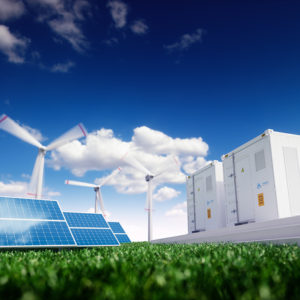Little more than a year ago, blackouts plunged much of Texas into darkness during a bitter winter storm. For days, millions of households went without power and heat. Commerce came to a screeching halt and hundreds of lives were lost. It was the kind of unthinkable tragedy that should have been a turning point for how the nation manages electricity grid reliability as we continue to navigate the energy transition.
Yet, a year later significant action to shore up grid reliability is hard to find. Reports and recommendations from federal regulators addressing root causes have produced little change. Instead of pumping the breaks on our haphazard approach to the energy transition, politicians proposed accelerating it.
The grid reliability problem – and an emerging energy inflationary problem – are getting far worse, not better. A new long-term reliability report from the North American Electricity Reliability Corporation (NERC), which oversees the reliability of the nation’s grid, directly points to the energy transition and the speed at which it is happening as the greatest threat to reliability. Previewing the report, one of NERC’s leaders said blackouts in Texas and California “should serve as a wake-up call for the rest of the country.”
Unfortunately, while we appear to still be sleepwalking into another grid disaster, perhaps the unfolding energy crisis in Europe is the alarm policymakers finally heed. Europe has mismanaged its energy and climate policy into an affordability and reliability shock not seen since the oil crises of the 1970s. European governments have taken apart dispatchable fuel diversity – closing well-operating coal and nuclear power plants – and made themselves reliant on weather-dependent wind and solar power and a gas market controlled by Vladimir Putin. Quickly rebounding energy demand and uncooperative weather have manifested into sky-high natural gas and electricity prices now driving soaring inflation across the board.
European households are set to pay an average of 54 percent more for energy than they did two years ago. Average residential consumers are expected to spend 1,850 euros ($2,095) on energy this year, jumping from 1,200 euros in 2020. This is pain that will derail recovery, push millions into poverty, and threaten to derail voter confidence in decarbonization efforts.
While Europe’s energy crisis has gone global, the U.S. has been shielded from the worst of it in no small measure thanks to our dispatchable fuel diversity and the underappreciated optionality provided by the coal fleet—optionality all but gone in Europe. The race to close coal capacity in the U.K., for example, has meant that faced with periods of low wind generation and exorbitant natural gas prices, Britain has no choice but to pay up. Politicians in both France and the U.K., faced with price spikes, have only now begun to turn their coal units back on.
The missteps in Europe, Texas, and California are producing both important lessons learned and a huge opportunity for this administration.
The Biden administration has seen what our energy future could look like if driven solely by fuel targeting and an unrelenting drive to renewables absent any regard for the importance of maintaining dispatchable fuel diversity and robust reserve margins while integrating and transitioning to variable power. It’s a path we need not take.
A successful, thoughtful energy transition requires planning and policy that reinforces and values grid reliability while preserving the energy affordability that underpins our economy. The U.S. coal fleet has an important role to play in ensuring we have the firm, fuel-secure power we need when we need it most, as well as the fuel diversity and optionality to shield consumers from price spikes that are coming. Responsibly getting to the grid of tomorrow means building on the shoulders of the grid and essential fuels we have today.

